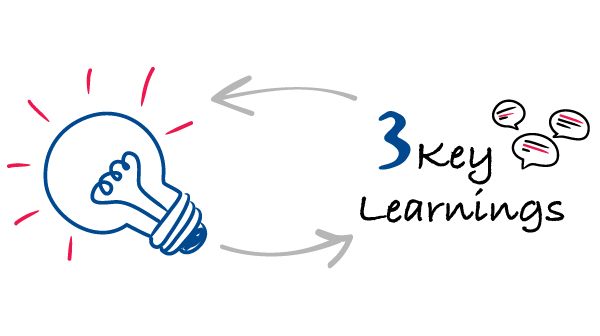
By Jasmina Henniova, Communications & Investment Manager, 3TS Capital Partners
The fact that diverse teams perform better is already a well-known fact. A 2019 McKinsey study of 1000 large companies found that those in the top quartile for ethnic and racial diversity in management were 36% more likely to have financial returns above their industry mean, and those in the top quartile for gender diversity were 25% more likely to outperform their peers. And this is by far not the only study which underlines the fact that diversity matters. If you put together a group of people that have diverse tools, they will come up with better solutions faster, as simple as that.
I have been working on diversity & inclusion topics from a very young age. When I was only 16, I joined a non-profit organization teaching intercultural learning, and I ended up working for them for 9 years, becoming the president of a local chapter later. After graduating and starting to work in business, I focused more on the gender diversity side of things and did my best to chip in for more equal opportunities there. Recently I’ve had the honor to be named on the Real Deals and PER Future 40 Diversity & Inclusion Leaders list. I would like to sum up some of my key learnings in this blog post.
Tackle the bias.
The way we grow up and we are educated helps us to structure ideas and learnings in our brain in certain ways. We create stereotypes and put things in boxes which can be helpful in order to orient ourselves in the world. The issue arises when we start forming unconscious prejudices and bias.
Unconscious bias is a tricky thing and there are several layers to it. On one hand side, it’s as the saying goes: “Birds of a feather flock together.” In other words, we naturally gravitate towards people that are similar to us. This is called the affinity bias and it of course jeopardizes diversity as it just groups more of the same people together and won’t lead to advantageous outcomes.
While this is often true, I’d also like to point out another type of bias, the confirmatory bias, which is based on our perceptions. This can cause those in minority to be biased against that same minority. As an example, a woman could perceive other men more trustworthy and would rather choose to work with them than with other women, because she grew up surrounded by images of mostly other men holding important positions or making crucial decisions and she would unintentionally perceive men as more capable.
We are usually blind to having these kinds of biases, so the most essential thing in my view is to talk more about it so that more of us can realize and then work further with it. There are various unconscious bias tests one can take and there is a plethora of trainings available to tackle it. We should also involve diverse role models and make it obvious that diversity is normal. Solving this can help us to build diverse teams that will be more engaged and productive.
Get the talent, keep the talent.
If we talk about building diverse teams, there are various aspects to consider and we should start by looking at the way our job ads are written. The language being used matters and can drive candidates away. There is a range of tools available nowadays to help employers write inclusive ads, like for example witty works or Textio. It is good to include the equal opportunity statement at the end. But remember to personalize it to avoid the impression of empty words. And in order to decrease bias risks in the further process, one can conduct blind CV reviews and involve various colleagues in the hiring process.
I would like to stop here for a moment and give an example of how an ad can drive candidates away. Based on the Hewlett Packard internal report, most women won’t apply for jobs unless they feel 100% qualified. If a job ad has a list of requirements out of which they fulfill all but one, or they don’t feel entirely confident about some of them, they will just not apply. On the contrary, men who would only tick 60% of the boxes would go ahead. This is why it is so important to consider what really is necessary for the job and stick to only that in ads in order not to miss out on talent in such early stages of the hiring process.
It seems like too often companies focus on how to attract more diverse talent and less on how to retain it, which might be as or even more important. In order to be able to maintain happy diverse teams, cultural shift in many organizations is needed in order to foster productive collaboration among a diverse employee base. People also need to be given fair pay, equal and transparent opportunity to grow and to be promoted, and this is where the unconscious bias comes into play again and sometimes sadly prevents this. Unless we are able to fix it, diverse talent will leave us faster than we can hire.
Involve men into the conversation.
Or in the broader sense, involve the majority into the conversation. I feel like the minority often gets together to deal with the unequal opportunity issues and discusses the challenges and possible solutions among themselves. Communities can be very powerful and can offer great support to its members. Yet solving the issues that concern both sides only within one side probably won’t bring the desired results.
This is why I always emphasize that it is important to involve men into the conversation. The fact remains that currently there is disproportion between men and women holding executive and board positions and thus it’s often men who can offer support, mentorship and career growth to women. They are also fathers, brothers and friends and making them allies instead of enemies is crucial in my opinion. They can, and most of them also want, to play a critical role in this and help to solve the issue in the long run.
If you have any questions or want to discuss with me further, contact me at jhenniova@3tscapital.com or on my LinekdIn.

